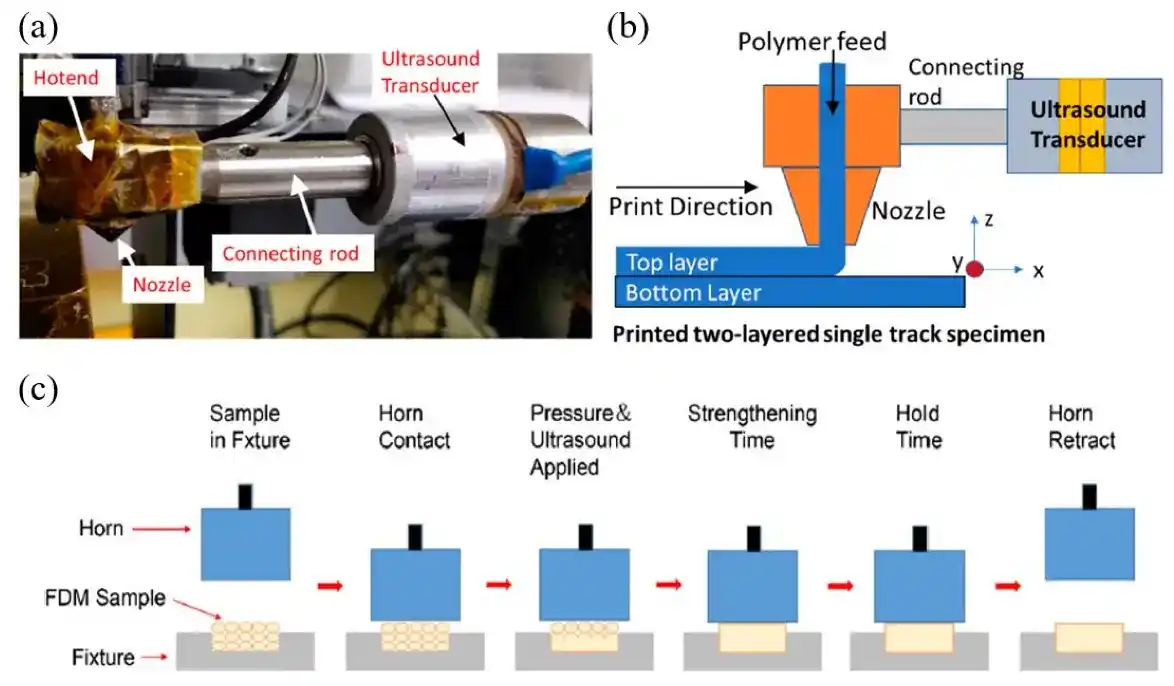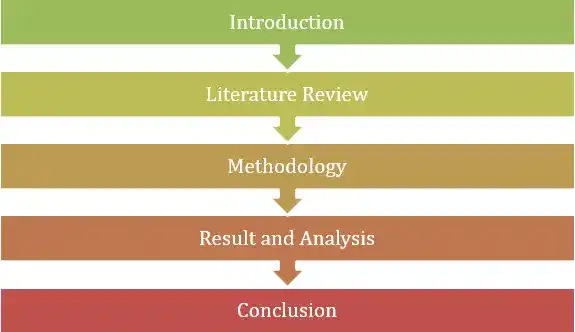Let Rapid Assignment Help simplify your academic challenges with professional Online Assignment Help designed for your success.
Additive manufacturing or 3D printing is the construction of a three-dimensional object from a CAD model or a digital 3D model, commonly known as 3D printing, is revolutionizing design and manufacturing across industries. Connecting rods are important components in engines that experience both static and dynamic loads. This research aims to utilize 3D printing to manufacture connecting rods and systematically investigate how factors like print orientation, infill percentage, layer height, and material affect their mechanical and thermal properties under various loads. SolidWorks software will be leveraged for modelling and simulation. Connecting rod models will be 3D printed with altered parameters and subjected to static load testing using universal testing machine as well as dynamic load testing on an engine test rig. A thermal imaging camera will capture temperature profiles. Supporting finite element analysis will also be performed in SolidWorks to gain further insights. The goal is to optimize the 3D printing process to fabricate durable and thermally-resilient connecting rods. The findings will allow the recommendation of ideal print settings to allow faster production of high-quality customized connecting rods catering to various engine configurations and applications. This study investigates how 3D printing parameters affect the strength, durability, vibrational characteristics and heat dissipation of additively manufactured connecting rods for engines via modelling, structured experiments and multi-physics performance evaluation under simulated operating loads. The aim is to optimise and qualify the process for the on-demand production of reliable customized lightweight powertrain components.
3D printing is the construction of a three-dimensional object from a CAD model, which builds objects layer-by-layer based on digital models, enabling on-demand production without requiring dedicated tooling or moulds. As the capabilities of designing a 3d model in CAD software technologies expand, it is increasingly used for end-use functional parts across the automotive, aerospace, and general engineering industries. One such important application is the fabrication of connecting rods (Lu et al. 2023). Connecting rods are crucial components in internal combustion engines that experience both static and cyclic loads originating from the piston. Conventionally manufactured using subtractive methods from metal blocks, connecting rods can be redesigned with topology optimization and efficiently produced using 3D designing through the powder-bed fusion of metals like aluminium and titanium alloys. However, the mechanical and thermal properties of additively manufactured parts depend on various process parameters related to printing direction, energy input, material quality, build layout, and post-processing. While previous studies have separately explored the static and fatigue behavior of printed connecting rods, there remains a need to systematically investigate the combined influence of process-induced factors on their static strength, high cycle fatigue life, stiffness, natural frequency, and temperature profiles under standard bench testing and actual dynamic engine loading conditions. Such research will help optimize 3D design strategies to fabricate connecting rods with superior durability and heat dissipation capabilities tailored to different engine configurations. Through well-designed experiments, finite element modelling, and test-rig-based stress measurement, this research aims to study process-property-performance correlations to recommend optimized 3D printing guidelines for on-demand production of high-quality customized connecting rods catering from small engines to high-performance automotive powertrains. As additive manufacturing methods like 3D printing continue advancing, researchers are exploring the use of these technologies to fabricate complex functional components like engine connecting rods (Kumar et al. 2023). However, uncertainties surround how tuning various process parameters affects the static load-bearing capacity, vibrational characteristics, fatigue life and thermal management properties of printed connecting rods when subjected to stressful operating conditions inside combustion engines.
Get assistance from our PROFESSIONAL ASSIGNMENT WRITERS to receive 100% assured AI-free and high-quality documents on time, ensuring an A+ grade in all subjects.

Figure 1: FDM-Based 3D Printing of Polymer and Associated Composite
This research aims to address these knowledge gaps through rigorous computational analysis and experimental validation using instrumented test rigs. By gaining clear holistic insights interlinking printing factors to performance metrics, science-backed recommendations can be formulated for reliable design and certified manufacturing of application-specific customized connecting rods on-demand to meet present and future powertrain needs. The findings stand to benefit a wide range of automotive stakeholders spanning original equipment producers, high-performance teams and maintenance providers by facilitating accessibility to durable, optimized connecting rods through distributed production pathways.
3D printing of a three-dimensional object from a CAD model builds and allows on-demand production of fully-functional customized components like engine connecting rods without the need for dedicated tooling or moulds (Zhang et al. 2023). However, accuracy, mechanical properties, surface finish and dimensional tolerances of 3D designing of parts are affected by various process parameters related to material quality, energy input, build layout, support structures and post-processing. While using 3D design tools for connecting rods can offer topological and weight optimization potential, existing research has studied the static and fatigue strength behaviour individually, without a combined investigation of factors affecting mechanical and thermal properties under both static and dynamic cyclic engine loads. Properties like elastic stiffness, natural frequency, thermal conductivity and operating temperature are also critical for connecting rod performance but their sensitivity to the different 3D printing knobs remains unclear. Current studies are mainly based on standard test coupon specimens like ASTM dogbones. There is a need for experiments and simulations using actual optimized connecting rod models printed with different orientations, slice heights, infill densities and raster angles to quantify the sensitivity of their static tensile strength, high cycle bending fatigue life, resonant frequencies and temperature profiles to material, geometry and process parameters. This will facilitate identifying factor combinations capable of yielding durable and thermally resilient connecting rods tailored for various engine operating conditions (Siddique et al 2022). Through integrated computational modelling using realistic boundary conditions and experimental validation using instrumented static and dynamic loading test benches, this research aims to investigate correlations between 3D printing factors like build direction, layer thickness, raster angle, air gap, laser power, infill percentage etc. and key connecting rod performance metrics like ultimate tensile strength, endurance limit, stiffness, thermal conductivity and temperature distribution when subjected to expected combustion chamber pressures and inertial loads. The outcomes are expected to recommend optimized guidelines and quality assurance strategies for printing durable customized connecting rods on demand for different automotive applications ranging from passenger vehicle engines to high-performance racing powertrains. Furthermore, by advancing fundamental knowledge on interconnections between additive manufacturing process factors and resultant performance characteristics in connecting rods exposed to multifaceted loading modalities spanning mechanical, thermal and vibrational aspects, this research can inform technologies beyond automobile applications too (Ponnamma et al. 2021). Certified design guidelines and physics-driven insights unlocked have potential exploitation avenues across diverse engineering sectors which aim to harness the power of 3D printing for distributed, resilient and sustainable on-demand fabrication methods aligned to Industry concepts.
Struggling with technical calculations or complex engineering designs? Our engineering assignment help is here to assist you with accurate and detailed solutions for assignments across all branches of engineering.
The goal of this research is to take a deeper dive in understanding how various 3D printing settings like build orientation, layer height and infill density patterns impact key performance attributes of designed connecting rod components when integrated into actual combustion engine environments (Zhang et al. 2023). By gaining clear quantified insights on correlations linking additive manufacturing process factors to resultant mechanical properties including burst strength, stiffness, elongation, vibrational mode shapes and fatigue limit along with thermal characteristics such as heat dissipation rates and localized hot spots generation, science-backed recommendations can be formulated for reliable designing and certified 3D printing of application-specific customized connecting rods.
H0: Build orientation and layer thickness do not have a significant effect on the ultimate tensile strength of 3D printed connecting rods.
H1: Build orientation and layer thickness have a significant effect on the ultimate tensile strength of 3D printed connecting rods.
H0: Infill pattern and raster angle do not significantly influence vibrational modal frequencies of printed connecting rods under dynamic engine loading.
H1: Infill pattern and raster angle significantly influence vibrational modal frequencies of printed connecting rods under dynamic engine loading.
H0: Layer thickness and print raster orientation do not significantly affect the fatigue life and endurance limit of additively manufactured connecting rods subjected to cyclic bending loads experienced in combustion engines.
H1: Layer thickness and print raster orientation significantly affect the fatigue life and endurance limit of additively manufactured connecting rods subjected to cyclic bending loads experienced in combustion engines.
Additive manufacturing or 3D modelling allows on-demand production of optimized lightweight components like connecting rods without dedicated tooling through direct 3D printing from digital CAD models. However, mechanical properties and performance depend strongly on material quality and process-induced defects governed by build layout, scan strategy, geometric complexity, and post-processing. While previous studies have separately focused on tensile, fatigue, impact or thermal characteristics, an integrated investigation correlating all these critical properties to a holistic set of factors affecting as-printed quality is lacking but imperative for qualifying 3D printed connecting rods across automotive, aerospace and high-performance racing applications (Deng et al. 2022). A complex interplay of parameters influences dimensional accuracy, surface finish, density uniformity, residual stresses and defects like porosity, thereby altering static strength, cyclic life, natural frequencies and thermal profiles. A dedicated research effort systematically evaluating correlations between print process inputs like orientation, layer height, raster angle and infill pattern with mechanical and thermal outputs like tensile modulus, fatigue limit, modal shapes and temperature distributions will be highly beneficial. It will facilitate identifying combinations of factor levels capable of yielding reliable customized connecting rods conforming to application demands. The scope includes modeling, advanced instrumentation, and test-rig-based experimentation supplemented by imaging and simulations to gauge property sensitivity to printing knobs. The outcomes are expected to provide clear physics-driven and application-targeted guidelines to manufacture connecting rods for varied engine configurations through certification of optimized 3D printing methodologies. In addition to benefiting automotive original equipment manufacturers and racing teams, the qualified and validated process knowledge can be exploited by related sectors like aerospace, oil and gas, and general engineering domains. Industry confidence remains low given uncertainties on achieving parity in mechanical performance relative to traditional subtractive approaches stemming from insufficient understanding of property sensitivity to myriads of tunable 3D printing process knobs (Clegg et al. 2023). By taking an application-targeted yet holistic approach linking design, modeling, structured experiments and multi-physics characterization, this research can unlock domain-specific guidelines needed by stakeholders across automotive, motorsports and allied sectors to leverage AM while having assurance on connecting rod integrity during prolonged usage across diverse operating environments and load spectra. The public dissemination of validated methodologies stands to anchor 3D printing as a trusted production mode for fabricating sustainable, resilient and customized critical engine components on demand.
This research aims to comprehensively characterize how tunable 3D printing process factors influence static strength, dynamic endurance, frequencies and thermal profiles of additively manufactured connecting rods under real combustion chamber loading scenarios. The systematic quantification of property sensitivity to print strategy will enable recommending design and manufacturing guidelines to efficiently 3D print durable customized connecting rods on demand for varied applications. The development of certified 3D designing technique for fabricating reliable connecting rods conforming to mechanical and thermal requirements of target engine configurations will directly benefit automotive original equipment manufacturers in enabling on-demand production of application-specific lightweight powertrain components. Additionally, high-performance motorsports teams can leverage the qualified process understanding to rapidly design and optimize bespoke connecting rods tailored to racing objectives within short development times and budgets (Yang et al. 2023). The physics-driven insights gained on correlations between printing process-structure-property will facilitate industrial exploitation of 3D designing tool across related domains like aerospace, oil and gas, plant equipment and general engineering for producing high-quality fully-functional components like turbine blades, drill bits and customized links/levers suited for mechanical, thermal and vibrational service conditions. By disseminating the research findings through conference and journal publications along with integration into 3d designing method certification standards like ASTM F42, the qualified and validated experimental methodologies along with recommended build rules and quality assurance strategies can educate both industry and academia to harness 3D tool for fabricating reliable high-performance components. This will assist more widespread adoption of additive technologies to truly realize concepts like distributed manufacturing and sustainably produce customized products on demand (Wang et al. 2021). This research tackles the problem head-on, by holistically characterizing the complex interconnections between design strategies, process recipes, physics of layer-based fabrication, in-situ metrology and resultant mechanical as well as thermal performance metrics - specifically for connecting rods. The comprehensive insights unlocked stand to provide equipment producers, automotive OEMs, racing teams and other stakeholders quantified science-backed recommendations linking reliable 3D printing factors settings to tailored performance targets. By facilitating access to resilient and sustainable connecting rods, further proliferation of additive technologies can be promoted across small and large organizations to truly realize the next industrial revolution based on agile manufacturing.

Figure 2: Research Framework
Additive manufacturing or 3D modelling shows immense potential for on-demand production of optimized lightweight components like connecting rods. However, process-induced defects govern the mechanical and thermal properties, necessitating a systematic study correlating print factors to performance. Through integrated modeling, experimentation and instrumentation leveraging a test-rig, this research aims to characterize the sensitivity of printed connecting rods to orientation, layer height and infill pattern under static and cyclic loads. The quantification of property dependence on material, geometric and process parameters will facilitate recommending optimized guidelines to 3D print durable customized connecting rods catering to diverse automotive applications. By disseminating the qualified designs, validated methodologies and recommended quality assurance strategies to industry and academia, this research strives to assist wider adoption of metal AM for fabricating high-performance static and dynamic load-bearing components across sectors. The physics-driven insights will also inform development of certification standards to harness AM for distributed on-demand production of reliable customized parts, aligned to the vision of Industry. This research effort represents a stepping stone towards anchorizing metal additive manufacturing as a trusted industrial process for fabricating end-use functional components serving mission-critical mechanical, thermal and vibrational service conditions.
References
Journals
Lu, J., Zhang, X., Li, S., Zhang, L., Wang, W., Li, Z., Zhang, Y., Wang, G., Li, Y. and He, R., 2023. Quasi-static compressive and cyclic dynamic impact performances of vat photopolymerization 3D printed Al2O3 triply periodic minimal surface scaffolds and Al2O3/Al hybrid structures: Effects of cell size. Journal of Alloys and Compounds, 969, p.172445.
Kumar, V., Pabla, B.S. and Vettivel, S.C., 2023. Design and analysis of 3D metal printed SS17-4PH connecting rod. International Journal on Interactive Design and Manufacturing (IJIDeM), pp.1-18.
Zhang, H., Chen, P., Zhang, Z., Lin, G. and Sun, W., 2023. Structural response and energy absorption assessment of corrugated wall mechanical metamaterials under static and dynamic compressive loading. International Journal of Impact Engineering, 172, p.104427.
Siddique, S.H., Hazell, P.J., Wang, H., Escobedo, J.P. and Ameri, A.A., 2022. Lessons from nature: 3D printed bio-inspired porous structures for impact energy absorption–A review. Additive Manufacturing, p.103051.
Ponnamma, D., Yin, Y., Salim, N., Parameswaranpillai, J., Thomas, S. and Hameed, N., 2021. Recent progress and multifunctional applications of 3D printed graphene nanocomposites. Composites Part B: Engineering, 204, p.108493.
Zhang, Y., Li, Y., Gao, H., Luo, T. and Cui, S., 2023. Static and dynamic mechanical behavior of self-supporting lattice with symmetric gradients. Thin-Walled Structures, 191, p.111022.
Deng, J., Li, X., Liu, Z., Wang, Z. and Li, S., 2022. Mechanical properties of three-dimensional printed combination-design truss lattice materials: Static and dynamic loading. Journal of Aerospace Engineering, 35(5), p.04022067.
Clegg, B.A., Shrestha, D.R. and Emami, N., 2023. Tribo-Mechanical Properties and Bioactivity of Additively Manufactured PAEK Materials for Load Bearing Medical Applications: A Systematic Review. Biotribology, p.100263.
Yang, L., Ye, M., Huang, Y. and Dong, J., 2023. Mechanics Characteristics of a 3D Star-Shaped Negative Poisson’s Ratio Composite Structure. Materials, 16(11), p.3950.
Wang, X., Qin, R. and Chen, B., 2021. Laser-based additively manufactured bio-inspired crashworthy structure: Energy absorption and collapse behaviour under static and dynamic loadings. Materials & Design, 211, p.110128.
Nian, Y., Wan, S., Avcar, M., Yue, R. and Li, M., 2023. 3D printing functionally graded metamaterial structure: Design, fabrication, reinforcement, optimization. International Journal of Mechanical Sciences, 258, p.108580.
Pajunen, K., Johanns, P., Pal, R.K., Rimoli, J.J. and Daraio, C., 2019. Design and impact response of 3D-printable tensegrity-inspired structures. Materials & Design, 182, p.107966.
Wang, Y.B., Liu, H.T. and Zhang, Z.Y., 2020. Rotation spring: Rotation symmetric compression-torsion conversion structure with high space utilization. Composite Structures, 245, p.112341.
Li, S., Hu, M., Xiao, L. and Song, W., 2020. Compressive properties and collapse behavior of additively-manufactured layered-hybrid lattice structures under static and dynamic loadings. Thin-Walled Structures, 157, p.107153.
Shi, K., Yang, W., Mei, H., Yan, Y., Xu, L., Cheng, L. and Zhang, L., 2023. Characterization and enhancement of quasi-static and shear mechanical properties of 3D printed lightweight SiOC lattices: effects of structural design and parameters. Journal of the European Ceramic Society.
Introduction Get free samples written by our Top-Notch subject experts for taking online Assignment...View and Download
Task 1: A Reflection Let Rapid Assignment Help simplify your academic challenges with professional Assignment Help...View and Download
Introduction Get Free Online Assignment Samples from UK's Best Assignment Helper Experts to boost your academic...View and Download
Introduction Get free samples written by our Top-Notch subject experts for taking online Assignment...View and Download
Introduction Get free samples written by our Top-Notch subject experts for taking online Assignment Help services. A...View and Download
Introduction: The Role of ESG in Asset Management Strategies Asset managers have been integrating the environmental, social, and...View and Download
Copyright 2025 @ Rapid Assignment Help Services
offer valid for limited time only*

